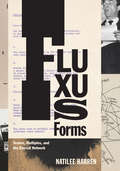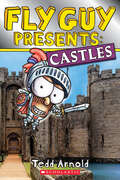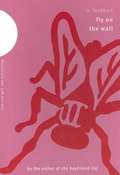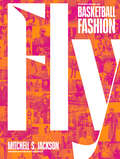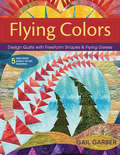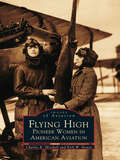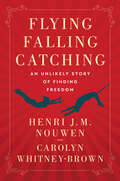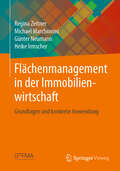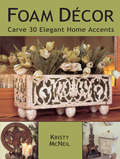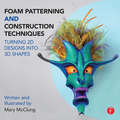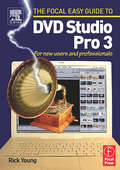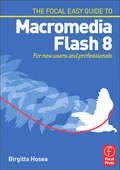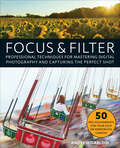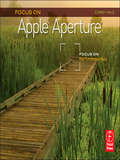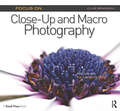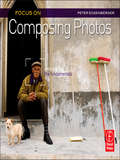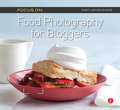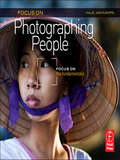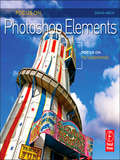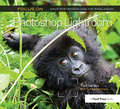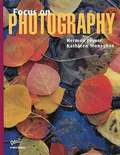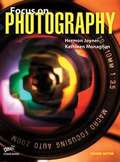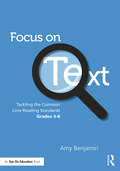- Table View
- List View
Fluxus Forms: Scores, Multiples, and the Eternal Network
by Natilee Harren“PURGE the world of dead art, imitation, artificial art. . . . Promote living art, anti-art, promote NON ART REALITY to be grasped by all peoples,” writes artist George Maciunas in his Fluxus manifesto of 1963. Reacting against an elitist art world enthralled by modernist aesthetics, Fluxus encouraged playfulness, chance, irreverence, and viewer participation. The diverse collective—including George Brecht, Robert Filliou, Dick Higgins, Alison Knowles, George Maciunas, Yoko Ono, Nam June Paik, Benjamin Patterson, Takako Saito, Mieko Shiomi, Ben Vautier, and Robert Watts—embraced humble objects and everyday gestures as critical means of finding freedom and excitement beyond traditional forms of art-making. While today the Fluxus collective is recognized for its radical neo-avant-garde works of performance, publishing, and relational art and its experimental, interdisciplinary approach, it was not taken seriously in its own time. With Fluxus Forms, Natilee Harren captures the magnetic energy of Fluxus activities and collaborations that emerged at the intersections of art, music, performance, and literature. The book offers insight into the nature of art in the 1960s as it traces the international development of the collective’s unique intermedia works—including event scores and Fluxbox multiples—that irreversibly expanded the boundaries of contemporary art.
Fluxus Forms: Scores, Multiples, and the Eternal Network
by Natilee Harren“PURGE the world of dead art, imitation, artificial art. . . . Promote living art, anti-art, promote NON ART REALITY to be grasped by all peoples,” writes artist George Maciunas in his Fluxus manifesto of 1963. Reacting against an elitist art world enthralled by modernist aesthetics, Fluxus encouraged playfulness, chance, irreverence, and viewer participation. The diverse collective—including George Brecht, Robert Filliou, Dick Higgins, Alison Knowles, George Maciunas, Yoko Ono, Nam June Paik, Benjamin Patterson, Takako Saito, Mieko Shiomi, Ben Vautier, and Robert Watts—embraced humble objects and everyday gestures as critical means of finding freedom and excitement beyond traditional forms of art-making. While today the Fluxus collective is recognized for its radical neo-avant-garde works of performance, publishing, and relational art and its experimental, interdisciplinary approach, it was not taken seriously in its own time. With Fluxus Forms, Natilee Harren captures the magnetic energy of Fluxus activities and collaborations that emerged at the intersections of art, music, performance, and literature. The book offers insight into the nature of art in the 1960s as it traces the international development of the collective’s unique intermedia works—including event scores and Fluxbox multiples—that irreversibly expanded the boundaries of contemporary art.
Fly Guy Presents: Castles (Scholastic Reader, Level 2)
by Tedd ArnoldFly Guy learns all about castles!Children across the nation voted for the topic of this Fly Guy Presents book, and the winning topic was... CASTLES! On their latest field trip, Fly Guy and Buzz learn all about castles: from drawbridges and dungeons to kings, queens, and knights! Award-winning author/illustrator Tedd Arnold brings nonfiction to life for beginning readers. There are humorous illustrations and engaging photographs throughout. The front cover features eye-catching holographic foil!
Fly on the Wall: How One Girl Saw Everything
by E. LockhartAt the Manhattan School for Art and Music, where everyone is "different" and everyone is "special", Gretchen Yee feels ordinary. She's the kind of girl who sits alone at lunch, drawing pictures of Spider-Man, so she won't have to talk to anyone; who has a crush on Titus but won't do anything about it; who has no one to hang out with when her best (and only real) friend Katya is busy. One day, Gretchen wishes that she could be a fly on the wall in the boys' locker room -- just to learn more about guys. What are they really like? What do they really talk about? Are they really cretins most of the time? "Fly on the Wall" is the story of how that wish comes true.
Fly: The Big Book of Basketball Fashion
by Mitchell S. JacksonEqual parts photo-rich lookbook, and cultural commentary, Fly: The Big Book of Basketball Fashion is the story of the extraordinary intersection of high fashion and basketball, from the league's inception to today, and celebrates the iconic style of NBA athletes. Each chapter explores the style of an era and the cultural influences that shaped it: The league&’s inception in 1949, pre-Civil Rights Movement, when the NBA was mostly comprised of white players who wore suits and skinny ties. The years following the Civil Rights Act of 1964 and the birth of funk and R&B when basketball fashion got flashier (think Walt &“Clyde&” Frazier and Wilt Chamberlain wearing fur coats and big hats). The Michael Jordan era of the 1980s and 1990s, with its oversize suits. The epic Iverson/Hip-Hop years of the late 1990s and early 2000s. And now to today, a time defined not only by social media and high fashion&’s birthing of the tunnel walk (think LeBron James, Dwyane Wade, and Russell Westbrook), but one in which athletes are idealized as style icons and activists, figures who inspire conversations beyond how they play and what they wear.
Flying Colors: Design Quilts with Freeform Shapes & Flying Geese
by Gail GarberTips and techniques for unleashing the designer within and creating your own original quilts.Let your imagination take flight! Gail Garber teaches you step-by-step techniques to create your own unique quilt designs, or to make any of the five bonus projects in this book. Draft shapes such as Flying Geese, triangles, and diamonds to fill strips of fabric that weave in and out of your design. Easy paper-piecing instructions help you make all your designs more accurate, from landscapes to radiating sunlight to flowing ribbons. Links to full-size foundation patterns are included, plus a gallery of quilts made by Gail and her students. Learn how to make intriguing quilts with techniques for using free-form strips and shapes to create dimension, illusion, and flow. There’s no limit to the designs you can invent!
Flying Funny: My Life without a Net
by Dudley RiggsDudley Riggs didn&’t have to run away from home to join the circus. Home was the circus. Son of the acclaimed aerial flyers Riggs and Riggs, he made his circus debut as a polar prince parading in a wagon pulled by a polar bear. At the age of five, he graduated to a risqué vaudeville act during the circus off- season; at eight, he outgrew his cutes (and his child stardom) and joined his high-flying parents on the trapeze. Eventually he had to learn to &“fly funny&” because he grew too tall to fly straight. In one way or another, Riggs has been flying ever since.The rest, as they say, is history. And what a story it is. In Flying Funny, Riggs shares many highs and lows while describing circus life and the evolution of America&’s popular entertainment during the twentieth century. From his early life in circus and vaudeville to his creation of the Brave New Workshop, we see how his show business experience and instincts helped him create in Minneapolis what became the &“next wave&” in American entertainment—improvisation. As a young man, Riggs lost everything in a tornado, got an education on the fly, and sailed with the All American circus to post–war Japan. On a slow boat home and restless about his future, he developed the idea of Word Jazz—creating a script on stage as it is being performed—and shortly after he opened the Instant Theater in New York. Later, he moved to Minneapolis where he founded the Brave New Workshop, launching the careers of comic greats such as Penn and Teller, The Flying Karamazov Brothers, Louie Anderson, Peter Tolan, Pat Proft, Nancy Steen, Liz Winstead, Al Franken and many others. Today, the Brave New Workshop thrives as the longest running improvisational theater in America. From flying funny on the trapeze to theater without a net, Dudley Riggs&’s story is filled with hearty laughs and eyebrow-raising insights. With a wry sense of humor and infectious warmth, he shares the exhilaration of flying whether through the air or on the stage.
Flying High: Pioneer Women in American Aviation (Images of Aviation)
by Kirk W. House Charles R. MitchellIn the beginning of the twentieth century, women weredemanding more freedom. What could bring more freedomthan a chance to fly? Women went up in those early wire-andfabric contraptions to gain independence, to make money, or to make their names as pilots. They sought to prove that women pilots could do just as well as men--and some did far better. Flying High: Pioneer Women in American Aviation tells the story of Blanche Stuart Scott, who made $5,000 a week andbroke forty-one bones; of Harriet Quimby, who flew the English Channel handily and then fell to her death in five feet of water near Boston Harbor; of Ruth Law and Katherine Stinson, who set American distance flying records--all before any of them were allowed to vote. Flying High: Pioneer Women in American Aviation also tells the tales of women behind the scenes--the financiers, engineers, and factory workers--from the earliest days of flying to victory in World War II. These stories of the first female flyers are told in rare, vintage photographs, many previously unpublished, from the archives of the Glenn H. Curtiss Museum.
Flying, Falling, Catching: An Unlikely Story of Finding Freedom
by Henri J. Nouwen Carolyn Whitney-BrownHenri Nouwen’s never-before-published story of his surprising friendship with a traveling trapeze troupe.During the last five years of his life, best-selling spiritual author Henri J. M. Nouwen became close to The Flying Rodleighs, a trapeze troupe in a traveling circus. Like Nouwen’s own life, a trapeze act is full of artistry, exhilarating successes, crushing failures and continual forgiveness. He wrote about his experience in a genre new to him: creative non-fiction. In Flying, Falling, Catching, Nouwen's colleague and friend Carolyn Whitney-Brown presents his unpublished trapeze writings framed by the true story of his rescue through a hotel window by paramedics during his first heart attack. Readers will meet Nouwen as a spiritual risk taker who was transformed through his engagement with these trapeze artists, as well as his participation in the Civil Rights movement, his life in community with people with intellectual disabilities, his personal growth through friendships during the 1990s AIDS pandemic, and other unexpected encounters.What will we do with our lives, and with whom will we do it? In this story of flying and catching, Nouwen invites us all to let go and fly, even when we are afraid of falling.
Flächenmanagement in der Immobilienwirtschaft: Grundlagen und konkrete Anwendung
by Regina Zeitner Michael Marchionini Günter Neumann Heike IrmscherDie Kenntnis der Bedeutung und korrekten Ausweisung von Flächen sind für das Facility Management einer Immobilie von großer Bedeutung.Dieses Buch führt in die Thematik des Flächenmanagements ein und gibt Aufschluss über richtige Ausweisung von Flächen in der Praxis. Für die wirtschaftliche Betrachtung einer Immobilie sind diese Angaben eine entscheidende Grundlage. Sie dienen zur Aufstellung des Raumprogramms, zur Kalkulation von Baukosten sowie zur Ermittlung der Einnahmen und Bewirtschaftungskosten. Flächenstandards, -flexibilität und -effizienz sind nicht nur in der gewerblichen Immobilienwirtschaft von Bedeutung. Das Benchmarking zur Bewertung von Flächen und Flächenkosten, die interne Leistungsverrechnung und die IT-Unterstützung für ein funktionierendes Flächenmanagement sind weitere wichtige Aspekte, die in diesem Buch behandelt werden.
Foam Decor: Carve 30 Elegant Home Accents
by Kristy McneilFoam Decor turns ordinary Plastifoam "RM" into incredible accessories and architectural pieces. This home decor is so elegant that no one will suspect it's made out of foam. Kristy McNeil is a pioneer in the field, and her book teaches crafters how to make everything from an angel wing sculpture to a scrollwork lamp, floor fountain, and birdbath. Projects are broken into three main chapters: Architectural Elegance, Contemporary Comfort, and Outdoor Patio Decor, plus an inspirational photo gallery of completed projects. Techniques, tools, and supplies are also explained in detail. • Decor projects look substantial, but they can be easily lifted with a finger or two • Designs look expensive, but are surprisingly economical • More than 24 projects, including step-by-step photography
Foam Patterning and Construction Techniques: Turning 2D Designs into 3D Shapes
by Mary McClungFoam Patterning and Construction Techniques: Turning 2D Designs into 3D Shapes explains how to create your theatrical prop, puppet, or costume design using the unique and tricky medium of foam. Step-by-step instructions, photographs, and explanations illustrate how to translate your design from paper to reality by creating custom "skin" patterns, followed by creation of a foam mockup. The book details how to bring your project to life with varied finishing techniques, including using fur and fabric coverings and dying and painting foam. Numerous supplies, tools, and safety procedures and protocols are also covered.
Focal Easy Guide to DVD Studio Pro 3: For new users and professionals
by Rick YoungThis highly illustrated, full color book tells you all you need to know to get up and running quickly using DVD Studio Pro to achieve professional results. All the essential areas are covered: preparing your assets, the DVD SP interface, setting up your DVD, adding tracks, building menus, adding markers, building slideshows, making subtitles and multiplexing. An invaluable first read for users of all levels who want to author DVDs professionally!
Focal Easy Guide to Macromedia Flash 8: For new users and professionals (The\focal Easy Guide Ser.)
by Birgitta HoseaIf you need to get to grips fast with creating interactive graphics and animation in Flash - then look no further! Whether you are a new user or a professional, this highly visual book is all you need to get up and running with the latest powerful upgrade - Macromedia Flash 8. Birgitta Hosea breaks down the software into its main components and offers simple, visual step-by-step instructions to explain the fundamental practical techniques you need to create finished projects. The accessible style and structure lets you dip in and out when working on a project, or work straight through to explore more of the program's capabilities and develop your skills. Written by a designer for designers The Focal Easy Guide to Macromedia Flash 8 offers a thorough coverage of the basic features of Flash, without going into in-depth coding with ActionScript.Birgitta Hosea is a motion graphics artist and Course Director of the London Animation Studio at Central Saint Martins College of Art and Design. Her experience ranges from designing moving branding to art directing pop promos and short films. A Volume in The Focal Easy Guide Series. The Focal Easy Guide series: . Starting working with new software immediately regardless of your level . Achieve professional results, learn practical skills from industry experts . Focused, user-friendly coverage of the key tools you need to know
Focus & Filter: Professional Techniques for Mastering Digital Photography and Capturing the Perfect Shot
by Andrew DarlowFree yourself from Auto Mode with indispensable tricks and techniques for professional-quality photos with your DSLR or mirrorless camera. Revealing insider secrets and easy-to-learn techniques for stunning photos, this book teaches you how to take beautiful images anywhere with DSLR or mirrorless cameras. Focus & Filter, a must-have guide by award-winning photographer Andrew Darlow, features fifty techniques, fifty Pro Assignments, and more than 250 color photographs that show you how to capture: *Candid and formal portraits *Safari-quality animal pictures *Spectacular nighttime cityscapes *Breathtaking fireworks photos *Dramatic high-speed motion *Mouthwatering food photos *Glare-free shots through glass Whether you&’re enjoying a hobby or building a career in photography, Focus & Filter includes all the technical advice you need to hone your skills, from choosing your equipment and setting up your studio to mastering camera settings, working in the field, and building rapport with your models.
Focus On Apple Aperture: Focus on the Fundamentals (The Focus On Series)
by Corey HilzAre you into photography not photomanipulation? Frustrated that you are spending too much time in front of the screen and not enough behind the lens? Feel like you are not getting the most out of the powerful processing functions of Apple Aperture? This straightforward, inspiring guide is aimed at photographers whose goal is to use the software to bring out the best in their photographs. Professional photographer and educator Corey Hilz leads you through a highly effective, professional's workflow with Aperture, from importing your photos from your camera and making image adjustments, to labelling each photo with metadata and keywords for effective organization and searching, and finally outputting your images for print or social media. He focuses on the vital aspects for photographers such as correcting tone and color, targeted adjustments, metadata, and managing a fast expanding library. Focus On Apple Aperture is packed with stunning photographs and screenshots to illustrate every tweak the author makes, to effortlessly teach the new or beginning user the fundamentals of the software. Users of all versions of Aperture will benefit from this book.
Focus On Close-Up and Macro Photography: Focus on the Fundamentals (The Focus On Series)
by Clive BransonWant to get the best out of your digital camera? Not quite sure how to capture up-close shots? Want easy to follow, expert advice on the best ways to creatively capture macro shots you can be proud of? This is your ticket to go beyond a snapshot to create a fine art print that you'll be so proud of. Macro and close-up photography involves a unique skill set in terms of exposure, lighting, and of course, composition in particular. You can take a quick photo of a sunflower in your back yard that will look mundane and typical OR you could learn how to take a picture of just a part of it-up close-and create a work of art. Let this book be your guide!
Focus On Composing Photos: Focus on the Fundamentals (The Focus On Series)
by Peter EnsenbergerAs digital cameras and software packages become more advanced, seemingly by the minute, it has become easier than ever to overlook the basic elements which have always resulted in the best photographs, no matter how fancy (or primitive) the camera itself. Composition is the single most important aspect of creating great images, no matter what level of photographer you happen to be. No amount of digital wizardry can turn a badly composed image into a picture you would want to display. While many books on composition tend to overcomplicate the subject, this book breaks down everything you need to know into small, digestible chunks of information that you will actually remember once you're out and about taking pictures. Instead of plodding through long and complex pages of text, this book supplements the necessary information, such as the basics of the rule of thirds and how to get good highlights and shadows, with tons of gorgeous, full color images that actually show you what to do and how to do it, rather than just telling you what to try. You'll be amazed at the gorgeous images you'll create, whether your passion is for photographing your family, pets, travel adventures, nature, or anything else.
Focus On Food Photography for Bloggers: Focus on the Fundamentals (The Focus On Series)
by Matt ArmendarizSharing your kitchen concoctions on your personal food blog has never been as popular as it is right now, but if you've ever had trouble getting your tasty temptations to look like pretty plates on camera, you know how difficult it can be to take amazing pictures of food. Matt Armendariz, of Mattbites food blog fame, shares his experiences and best practices for creating wonderful food photos in Focus On Food Photography for Bloggers. Written specifically for you the blogger, Matt discusses the ins and outs of equipment, lighting, composition, propping, sparking your inspiration, and getting creative, all with what you have on hand at home! Learn how to avoid common pitfalls with foods that are notoriously camera shy, how to successfully snap your dinner at a restaurant as well as on your kitchen table, and how to style your food with what you have in your cupboards. He also includes advice on post-processing, posting, and protecting your prized images. As well as on his blog, Matt's photography has been featured in The Skinny Bitch Cookbook, on Martha Stewart, Paula Deen's Best Dishes, and Gordon Ramsay's Hell's Kitchen, along with numerous food magazines and newspapers. Let this seasoned blogger give your food photography the boost it needs to really make your readers salivate!
Focus On Photographing People: Focus on the Fundamentals (The Focus On Series)
by Haje Jan KampsTaking good photographs of people is a combination of many factors: What is the best light for the subject? How should they stand? What aperture should you use for maximum impact? This easy-to-follow, highly visual guide to portraiture explains the technical and aesthetic considerations of creating great images. Step-by-step instruction, tips from an experienced professional photographer, project assignments and gorgeous photography make learning how to take good photos of people quick and easy. Aimed at beginners or amateurs toting a DSLR and wanting pointers on how to make their people photography really shine, this book offers the basics on composition, lighting, posing, street photography and post-production techniques in a fun andconversational manner.
Focus On Photoshop Elements: Focus on the Fundamentals (The Focus On Series)
by David AschAre you bewildered by the advanced editing options available in Photoshop Elements? Do you want to get the most out of your image without going bleary-eyed in front of a computer screen? This handy guide will explain the ins and outs of using Photoshop Elements, without having to spend hours staring at the screen. Using a fabulous combination of easy-to-follow advice and step-by-step instructions, Focus On Photoshop Elements gives great advice on setting up, storing and sharing your image library and teaches you the basics of RAW image processing and color correction, plus shows you how to edit and retouch your images for stunning results. These simple tweaks and adjustments will take your images from so-so to amazing - and fast! Packed with inspiring photographs, this guide focuses on your needs as a photographer and nothing else.
Focus On Photoshop Lightroom: Focus on the Fundamentals (The Focus On Series)
by Dave Stevenson Nik RawlinsonCompatible with all versions of Lightroom Unsure where to start with Photoshop Lightroom? Feeling daunted by other 600 page monster user guides? Want to learn how to get the best out of your photography with the program in a snap? Focus on Photoshop Lightroom teaches you how to stay organized by using Lightroom’s industry-standard keywording and captioning features, bring out the very best in your photography with the processing module, and how to create image presets that make polishing a series of images quick and easy. Expert photographers and Lightroom users Dave Stevenson and Nik Rawlinson lead you through the ins and outs of the program with easy-to-follow steps and projects to get your creative juices flowing! Discover time-saving features and shortcuts to navigate Lightroom’s deceptively simple interface. Learn how to use the different Lightroom modules: how to import, organize, and sort your photos, edit them, create a book, video clips, or a slideshow, and how to make a great print! Be inspired by gorgeous photography and editing tips and tricks.
Focus on Photography
by Kathleen Monaghan Herman JoynerTo get the most out of any tool, it is valuable to understand its key features and intended use. In detailing the unique design and features in this textbook, the following will help make focus on photography the most valuable tool in your photographic studio.
Focus on Text: Tackling the Common Core Reading Standards, Grades 4-8
by Amy BenjaminAs schools shift to the Common Core, many English language arts teachers are left with questions about how their classrooms should look. Is fiction out? Can I still do strategy instruction? Does close reading mean deliberating on each word? Finally, there’s a resource with all of these answers and more. In Focus on Text, bestselling author Amy Benjamin provides practical guidance on how to realistically implement the Common Core reading standards. Part I of the book examines misconceptions about the standards and what’s really required. It also takes you inside classrooms to see how teachers are modifying their instruction. Part II tackles each reading standard for grades 4-8. You’ll learn how to teach the standards with literary and informational texts and how to use them as a springboard for instruction in writing, language, speaking, and listening. Topics include…• Defining close reading and how is it different from word-by-word reading. When and how do students need to go over a text meticulously?• How to use scaffolding through background knowledge to help students with challenging texts• The best instructional practices to help students increase their range of reading and level of text complexity• Ideas for teaching key concepts such as text structure, point of view, theme, stated and implied meanings, and the progression of ideas and characters• Tweaking your assessments to better align with the Common Core--how to create reading check quizzes, unit tests, and cold reading tests to see if students are growing as readers. • And much, much more! Throughout the book, you’ll find teaching tips and practical resources to use with students, such as question starters and sentence stems. You’ll also get a wide variety of classroom examples at different grade levels and with different texts. Whether you’re experienced with the Common Core or just getting started, this book will give you exciting new ideas for making them work in your own classroom so your students grow as readers!
